Add messages to an Azure Storage queue using Functions
In Azure Functions, input and output bindings provide a declarative way to make data from external services available to your code. In this quickstart, you use an output binding to create a message in a queue when a function is triggered by an HTTP request. You use Azure storage container to view the queue messages that your function creates.
Prerequisites
To complete this quickstart:
An Azure subscription. If you don't have one, create a free account before you begin.
Follow the directions in Create your first function from the Azure portal and don't do the Clean up resources step. That quickstart creates the function app and function that you use here.
Add an output binding
In this section, you use the portal UI to add a queue storage output binding to the function you created earlier. This binding makes it possible to write minimal code to create a message in a queue. You don't have to write code for tasks such as opening a storage connection, creating a queue, or getting a reference to a queue. The Azure Functions runtime and queue output binding take care of those tasks for you.
In the Azure portal, open the function app page for the function app that you created in Create your first function from the Azure portal. To do open the page, search for and select Function App. Then, select your function app.
Select your function app, and then select the function that you created in that earlier quickstart.
Select Integration, and then select + Add output.
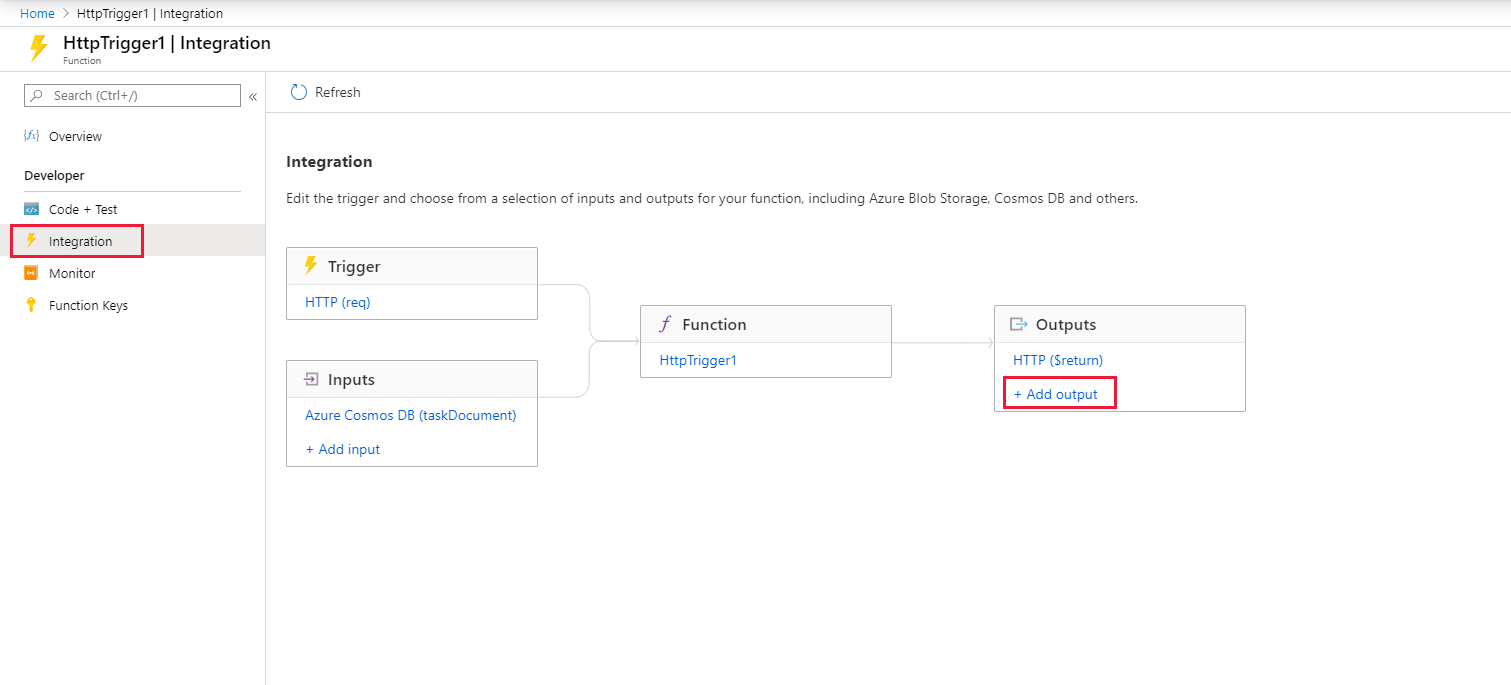
Select the Azure Queue Storage binding type, and add the settings as specified in the table that follows this screenshot:
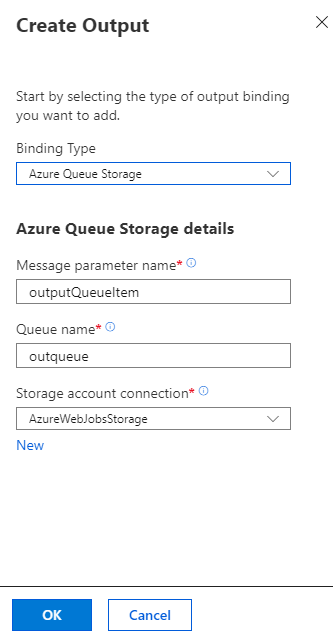
Setting Suggested value Description Message parameter name outputQueueItem The name of the output binding parameter. Queue name outqueue The name of the queue to connect to in your Storage account. Storage account connection AzureWebJobsStorage You can use the storage account connection already being used by your function app, or create a new one. Select OK to add the binding.
Now that you have an output binding defined, you need to update the code to use the binding to add messages to a queue.
Add code that uses the output binding
In this section, you add code that writes a message to the output queue. The message includes the value that is passed to the HTTP trigger in the query string. For example, if the query string includes name=Azure, the queue message will be Name passed to the function: Azure.
In your function, select Code + Test to display the function code in the editor.
Update the function code depending on your function language:
Add an outputQueueItem parameter to the method signature as shown in the following example.
public static async Task<IActionResult> Run(HttpRequest req, ICollector<string> outputQueueItem, ILogger log) { ... }In the body of the function just before the
returnstatement, add code that uses the parameter to create a queue message.outputQueueItem.Add("Name passed to the function: " + name);Select Save to save changes.
Test the function
After the code changes are saved, select Test.
Confirm that your test matches the image below and select Run.
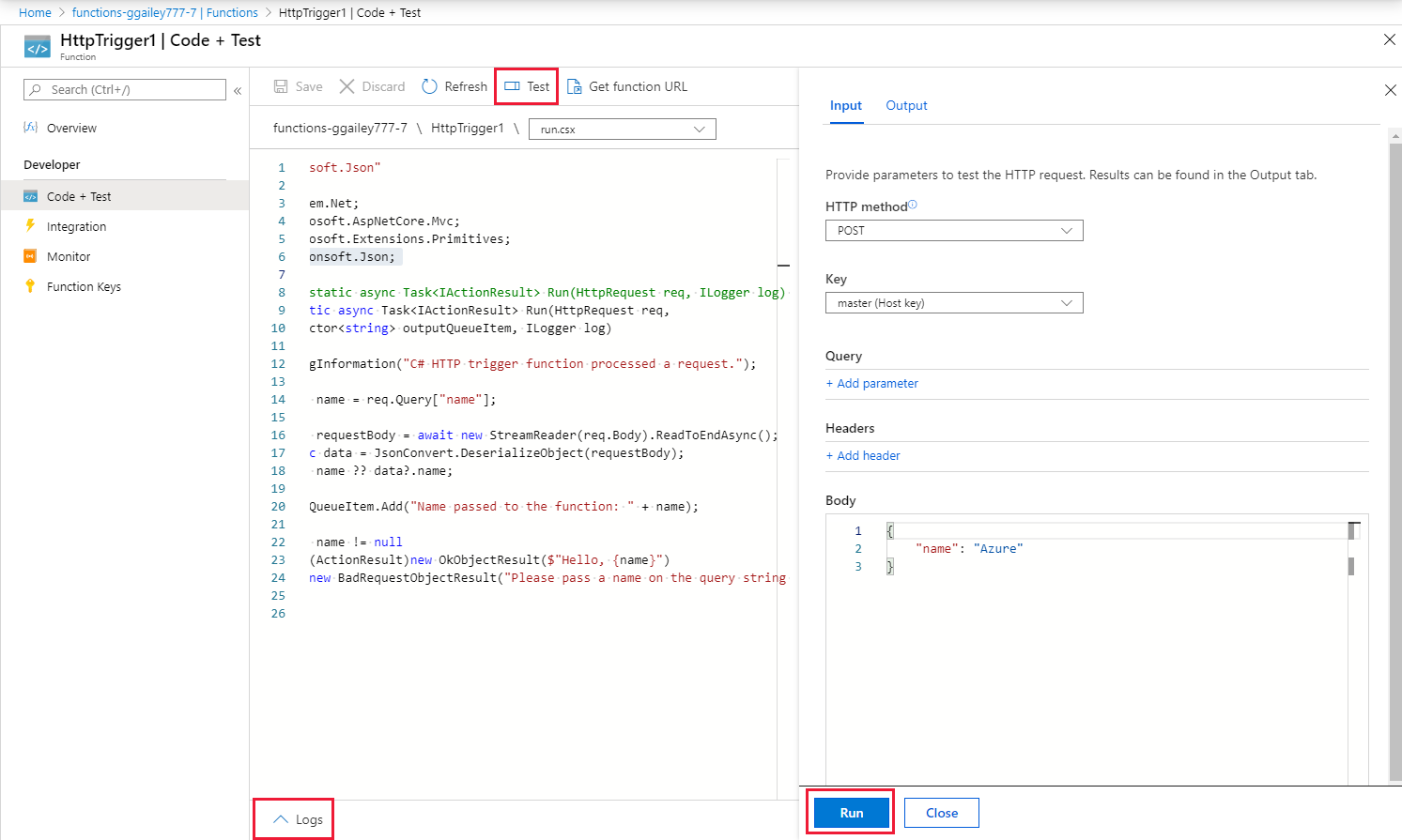
Notice that the Request body contains the
namevalue Azure. This value appears in the queue message that is created when the function is invoked.As an alternative to selecting Run here, you can call the function by entering a URL in a browser and specifying the
namevalue in the query string. The browser method is shown in the previous quickstart.Check the logs to make sure that the function succeeded.
A new queue named outqueue is created in your Storage account by the Functions runtime when the output binding is first used. You'll use storage account to verify that the queue and a message in it were created.
Find the storage account connected to AzureWebJobsStorage
Go to your function app and select Configuration.
Under Application settings, select AzureWebJobsStorage.
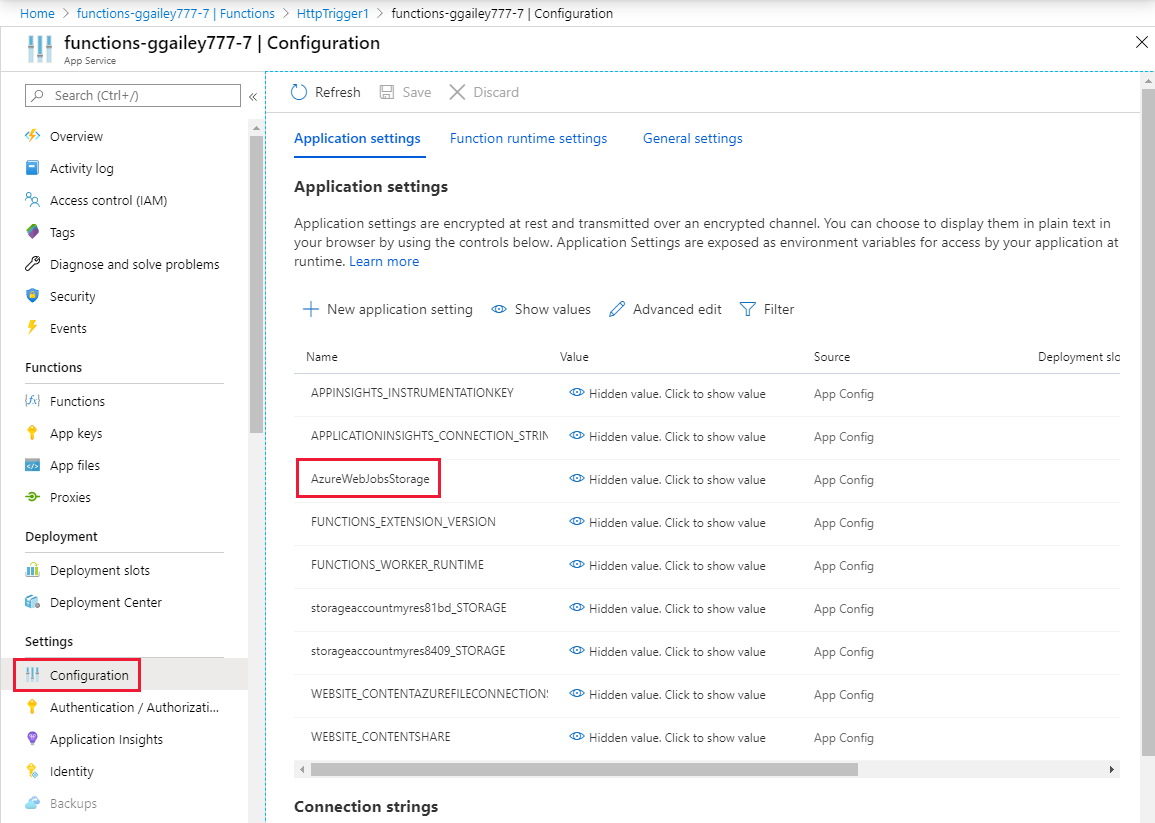
Locate and make note of the account name.

Examine the output queue
In the resource group for your function app, select the storage account that you're using for this quickstart.
Under Queue service, select Queues and select the queue named outqueue.
The queue contains the message that the queue output binding created when you ran the HTTP-triggered function. If you invoked the function with the default
namevalue of Azure, the queue message is Name passed to the function: Azure.Run the function again, and you'll see a new message appear in the queue.
Clean up resources
Other quickstarts in this collection build upon this quickstart. If you plan to work with subsequent quickstarts, tutorials, or with any of the services you've created in this quickstart, don't clean up the resources.
Resources in Azure refer to function apps, functions, storage accounts, and so forth. They're grouped into resource groups, and you can delete everything in a group by deleting the group.
You've created resources to complete these quickstarts. You might be billed for these resources, depending on your account status and service pricing. If you don't need the resources anymore, here's how to delete them:
In the Azure portal, go to the Resource group page.
To get to that page from the function app page, select the Overview tab, and then select the link under Resource group.
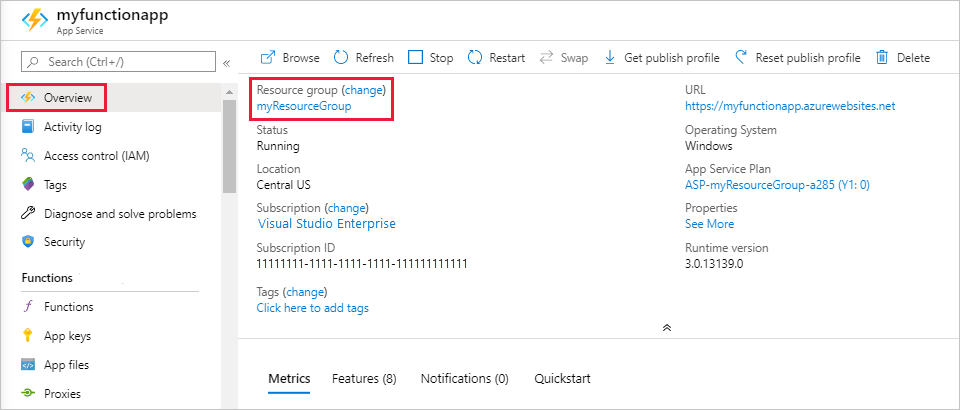
To get to that page from the dashboard, select Resource groups, and then select the resource group that you used for this article.
In the Resource group page, review the list of included resources, and verify that they're the ones you want to delete.
Select Delete resource group and follow the instructions.
Deletion might take a couple of minutes. When it's done, a notification appears for a few seconds. You can also select the bell icon at the top of the page to view the notification.
Next steps
In this quickstart, you added an output binding to an existing function. For more information about binding to Queue storage, see Azure Functions Storage queue bindings.
- Azure Functions triggers and bindings concepts
Learn how Functions integrates with other services. - Azure Functions developer reference
Provides more technical information about the Functions runtime and a reference for coding functions and defining triggers and bindings. - Code and test Azure Functions locally
Describes the options for developing your functions locally.
Feedback
Coming soon: Throughout 2024 we will be phasing out GitHub Issues as the feedback mechanism for content and replacing it with a new feedback system. For more information see: https://aka.ms/ContentUserFeedback.
Submit and view feedback for